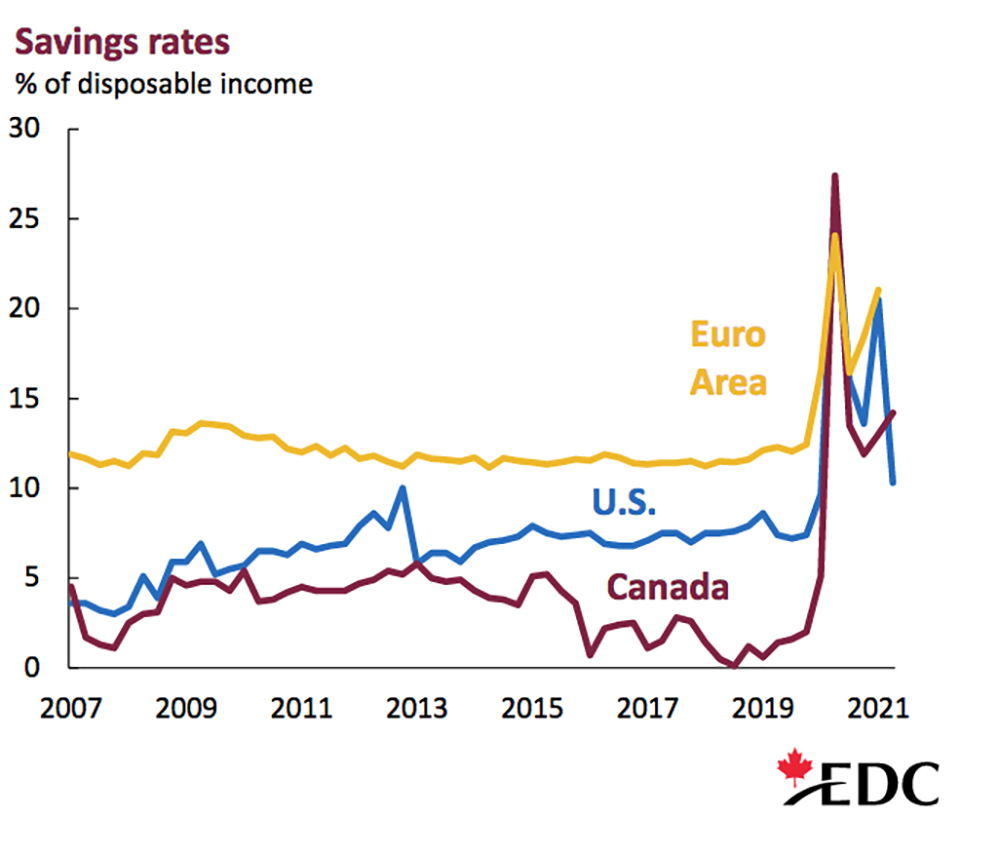Export Development Canada is forecasting another strong year of global economic growth in 2022.
It predicts a 5.5 percent increase in global gross domestic product, down slightly from six percent in 2021.
That is despite the Omicron-related resurgence in the COVID-19 pandemic.
Read Also

Agritechnica Day 3: Hybrid drive for a combine, data standards keep up to tech change and tractors of the year
Agritechnica 2025 Day 3: Hybrid drive for a combine, data standards keep up to tech change and tractors of the year.
“The trajectory of the global economy seems to have decoupled from the trajectory of the virus,” Stuart Bergman, the EDC’s deputy chief economist, said in a recent webinar.
Policy makers are shifting their attention to managing rates of hospitalization and mortality versus managing rates of infection and that is allowing businesses to better function.
“The world economy is hot. That’s not changing. There is no denying that if you look at the data,” he said.
Agriculture is one of the sectors leading the charge.
“As wealth goes up, the first thing that consumers spend their money on is food,” said Bergman.
They want more protein and better-quality food and Canada can deliver on both of those fronts, he said.
Consumers around the world have adapted and changed what they consume and how they consume it, shifting to online purchases.
Retail sales in the United States are up 23 percent over pre-pandemic levels. Canadian sales have increased by a more modest 10 percent.
That momentum is expected to continue due to pent-up demand that was already in place before the pandemic hit.
“Once we went into lockdown there was suddenly a whole lot less stuff to spend your money on,” said Bergman.
That has led to an excess of readily available cash in Canada amounting to 13 percent of gross domestic product. In the U.S. and the European Union, it is closer to 17 percent.
“That’s an enormous wall of cash,” he said.
It is expected to fuel continued growth in the world economy in 2022 and beyond despite the continuing pandemic.
Global trade has snapped back, with exports now two percent above pre-pandemic levels in advanced economies and a stunning 23 percent in emerging economies.
Add in vast government stimulus spending, easy liquidity and substantial business investment and it appears the global economy is back to normal.
But there are still lingering concerns. Supply chain shortages and shipping woes are at the top of the list.
EDC believes the capacity is there to handle the world’s shipping needs. It is just a matter of getting goods to where they need to be.
Emerging economies have been shipping massive amounts of consumer goods to advanced economies, but the flow of ships and containers back to those emerging economies has been lacklustre, creating a global imbalance.
That is expected to sort itself out by mid-2022.
The other big caveat in the forecast is inflation. Canada’s inflation rate was 4.7 percent in November.
EDC believes it is a temporary surge related to additional costs in the system caused by the supply chain problems.
Logistical problems, manufacturing headaches and rising labour costs will cost U.S. retailers an estimated $200 billion this holiday season.
The fear is that higher costs like that will become more permanent if wages get out of control. Workers and unions are demanding wage increases to help pay for the rising costs of consumer goods. And they have the upper hand due to a shortage of skilled labourers.
“The balance of power seems to have shifted, at least for the time being, to the employee,” Bergman said.
Germany’s largest union is seeking a 5.3 percent pay hike for its members. John Deere workers in the U.S. recently ended a month-long strike after getting a 10 percent raise.
Higher wages mean workers can afford to pay higher prices for goods, leading to a continuation of the inflationary cycle.
However, central banks around the world are telegraphing that interest rate hikes are on the horizon, which should help tame inflation.
Other risks in the EDC forecast include additional COVID variants, dwindling government stimulus programs and geopolitics such as the growing tensions between Russia and Ukraine.
sean.pratt@producer.com
















